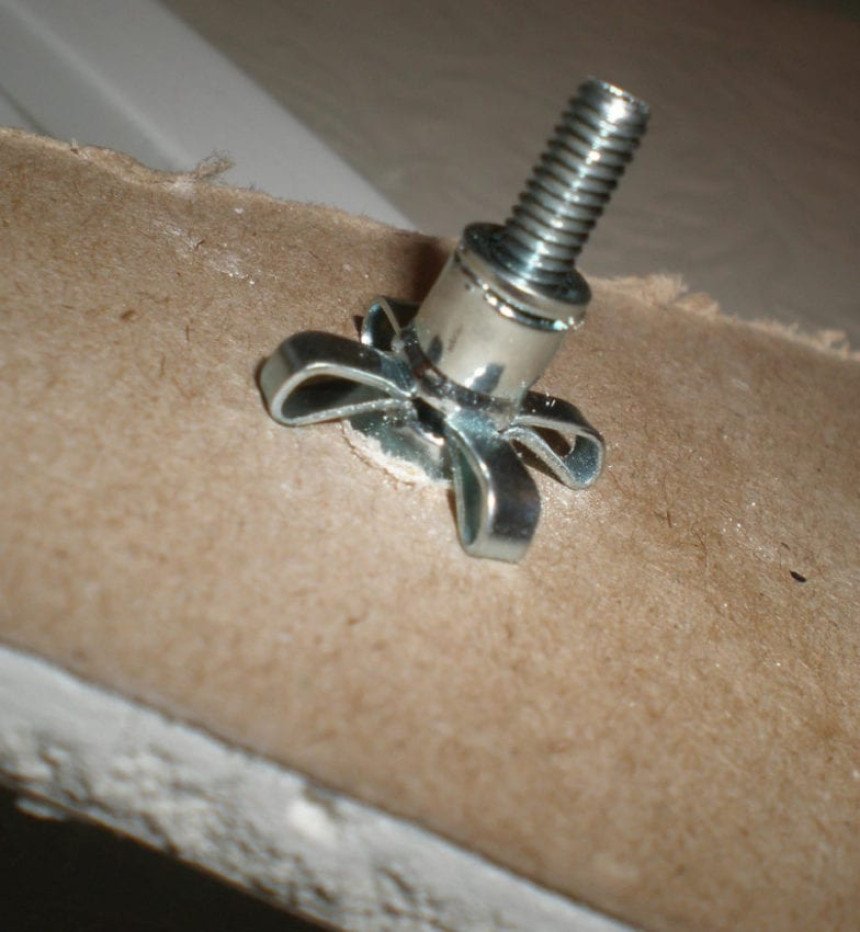How to Use and Install Drywall Anchors: Tips from the Pros
So you’ve got some items to hang, but you don’t want them eventually falling off of your wall and shattering into a million pieces? Some type of drywall anchor will likely be your best friend. Commonly, you’ve got your plastic sleeve anchors, your self-drilling threaded anchors, molly bolts, and toggle bolt anchors. All of them accomplish the same general task by expanding and biting into or gripping the drywall. If you’re wondering how to use or install drywall anchors, we’ve got the basics covered for you.
Which Drywall Anchor Should I Choose?
Generally, your drywall anchor selection will revolve around the weight of the item you wish to hang. While there are actually many types of drywall anchors available, some are more common than others. For the sake of brevity, we’ll stick with some of the more common types.
- Less than 10 lbs: plastic sleeve anchor
- 10 to 25 lbs: self-drilling threaded drywall anchors
- 25 to 50 lbs: Snaptoggle, molly bolts, or traditional toggle bolts
- Over 50 lbs: Snaptoggle, toggle bolts, or screw into an actual stud
There are some drywall anchors rated for 100 pounds or more. Use these with discretion and test them prior to hanging expensive items from them.
Note: This blog is only for learning purposes.
How to Use a Drywall Anchor
Installing A Plastic Sleeve Anchor
- With a pencil, mark the point where you want to hang whatever it is you’re trying to hang.
- Drill/make a pilot hole. You can use any variety of tools to accomplish this, though you need to make the pilot hole smaller than the width of the anchor. If a pilot bit doesn’t come with the set, the packaging will tell you which size to use.
- Stick the anchor in the pilot hole and tap it into place until the head of the anchor flushes up with the wall. A rubber mallet is best, but a small finish nailer will also work.
- Use a screwdriver to set the screw. You can use a drill, but go slow so you don’t overdrive it.

Anchoring With Molly Bolts
You’ve generally got two choices when it comes to molly bolts, or “hollow wall anchors”: pointed and un-pointed. The dull-tipped un-pointed anchors require you to drill a pilot hole into the drywall. Pointed tip styles don’t need a pilot hole; you can just tap these into place with a hammer. You might also find molly bolts with barbed heads. These barbs grip the surface of the drywall and keep the anchor from spinning in its hole.
You May Also Like: Impact Driver vs Impact Wrench | Which Impact Tool Do You Need?

- Mark the point where you’d like to hang stuff.
- If a pilot hole is needed, drill one. Check the package to find out the size you’ll need for the pilot hole.
- After insertion, tighten the bolt in the sleeve of the molly. This will cause the legs to expand out and grip the other side of the drywall.
- Once you tighten down the molly bolt, back the screw out of the sleeve and hang directly from the head of the screw.
Installing a Toggle Bolt Drywall Anchor
When you’ve got heavier items to hang, but can’t find a wall stud to hang it on, toggle bolt anchors can save the day. Of course, there are a few things to be aware of before getting started. For one thing, you’ll have to drill a hole that allows for the toggles to pass through. This will require a hole that exceeds the width of the screw head, so toggle bolts can really only be used in conjunction with a bracket that will cover the hole. Also, while these drywall anchors can support a fair amount of weight, your softish drywall will fail if you put too much weight on it.
- Mark your hanging point.
- Drill a hole big enough to allow for the toggle bolt to slip through when in its folded position. The manufacturer instructions on the side of the box of toggle bolts should give you the necessary specs for drill bit widths.
- Put the bolt through the bracket you’ll be attaching to the wall. Then, thread the toggle onto the bolt with the tips facing the screw head.
- Squeeze the toggle closed and jam both the toggle and bolt through the wall. When the toggle clears the backside of the drywall, it will open up and grip the wall.
- Tighten the bolt until it’s snug.
What if the Drywall Anchor Hole is Too Big?
Sometimes you accidentally overdrill the drywall anchor hole. When this happens, you have several options:
- Pick up a larger drywall anchor
- Proceed with a washer if using a standard toggle bolt
- If using a threaded anchor, and the bolt or screw seems too small, grab a larger one and see if you can get a secure fit
Of course, you can avoid most of these problems by ensuring you follow the directions for recommended bits. We also recommend drilling as straight as possible and not “reaming out” the hole when you drill. This keeps everything at the intended size. If you drill too large a hole, you risk allowing the drywall anchor to spin when you insert the screw.
DeWalt 20V Max Cordless 2 1/4 HP Plunge Router DCW620
In the world of woodworking and carpentry, precision and versatility are paramount. Enter...
Best Miter Saws of 2024 – 5 Top Models Tested
Looking for the best miter saws of 2024? Our expert team has tested and reviewed the top 5...
How to Choose the Right Concrete Anchor for Your Needs
I have a most unimaginable admission to make: I love securing things to concrete. It's an...
Impact Driver vs. Drill – What’s the Difference?
When it comes to tackling DIY projects or professional construction work, having the right...
Best String Trimmers for Professionals and Homeowners in 2024
String trimmers, also known as weed eaters or line trimmers, are essential tools for maint...
